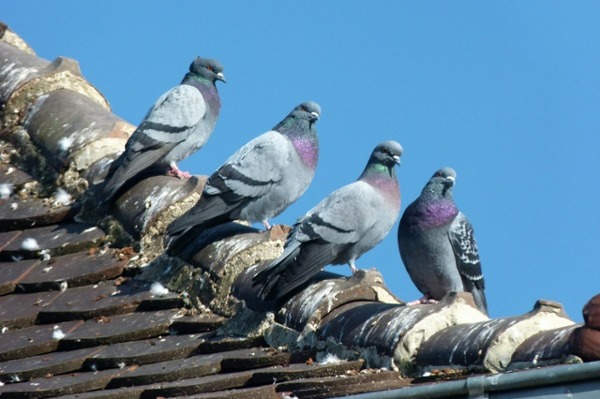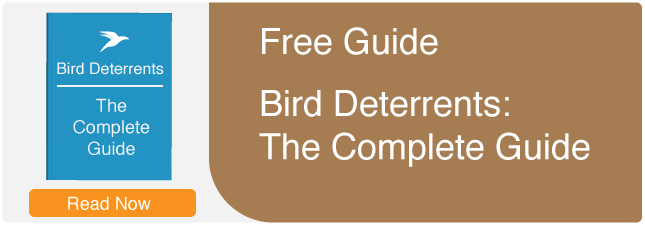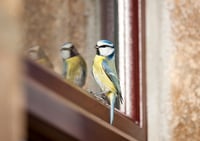
As a professional bird control specialist, you'll encounter problems large and small. Occasionally, homeowners or business owners may be interested in taking care of their own bird control efforts. While some pest bird issues can be solved with DIY methods, it's not always the best solution. Properly deterring pest birds requires specific tools, and installing bird control products can be dangerous. By learning the situations most suited to DIY bird control and when DIY options aren't likely to offer ideal results, you can better advise your customers about DIY bird control.
3 Things to Customers Need to Know Before Attempting DIY Bird Control
Professional bird control exists for a reason. But some products are perfect for minor situations that property owners can tackle themselves. When advising customers about DIY bird control, ensure they understand these important factors about the pest bird situation they are trying to address.
1. Bird Type
Birds come in all shapes and sizes, and different bird species react distinctively to the various methods of bird control available. Unfortunately, you might not have the opportunity to see birds in action to get a visual identification. However, even without a visual identification, property owners can inspect the damage to determine what type of bird species they're dealing with.
- Pigeons: Pigeons typically gather in large groups and leave significant amounts of droppings. Pigeon droppings are highly corrosive and can cause significant damage to building materials. Nesting debris may also build up in gutters and other areas.
- Starlings: These tiny birds nest in small crevices. Part of the job will include finding and removing nesting materials out of cracks.
- Gulls: Only located in coastal areas, gulls leave large droppings, food scraps like chicken and fish bones, and shells lying around. Damage can also occur when they drop large objects.
- Crows: Crows most commonly cause pecking damage. Crows and ravens are likely to peck at insulation, roofing materials, and other areas with soft surfaces.
- Vultures: These birds are easy to recognize due to large droppings and pecking and scratching damage. Vultures roost in particularly high spots like high roofs.
2. Bird Pressure Level
Bird pressure refers to how committed pest birds are to the space you're trying to remove them from. Bird control specialists are familiar with the fact that birds are easier to scare away from some places than others and the reasons for such behavior. But property owners who have never attempted bird control may need added guidance.
There are three bird pressure levels:
- Heavy: Here, you’ll find large flocks roosting and nesting in spots where most of their needs are met. These spots typically provide shelter, water, and food sources.
- Medium: Medium pressure level areas meet some needs, like having temporary food sources and high vantage points where predators are visible. Birds typically visit these areas daily but don't use them for nesting.
- Light: These areas offer occasional resting spots without meeting specific needs.
DIY bird control is usually suited to areas with light bird pressure.
3. Difficulty Level
You don't need to be a professional to place a single visual deterrent on your deck or patio. However, if you intend to keep birds away from the eaves of your home, product installation will be considerably more difficult. For example, commercial properties are rarely in a position for effective DIY bird control. Commercial property management companies usually have connections with a pest company or get a referral from a partner. But larger commercial properties with in-house pest management might invest in bird control training to further educate their team.
DIY bird control is typically best suited to specific situations. The best time to consider DIY bird control instead of hiring a pest company is in a light pressure area that is easily accessible. Generally, a property owner should be able to see the problem and know what the problem is, as well as have the confidence they have the physical capability to take care of it. These types of projects usually take place on a residential property in a suburban area. They include a few birds or a single offender, like a woodpecker, causing damage to a home.
Bird Control Products Most Likely to Be Used for DIY Bird Control

As a pest control specialist, you have to separate your professional capabilities from the abilities your customers are most likely to display. While professionals have the tools and experience to install complex bird control solutions on commercial buildings and tall billboards, a homeowner or business owner seeking a DIY solution will most likely use products that are easy to install and will deter birds in light pressure situations.
Keep these distinctions in mind when making recommendations:
- Deterrence vs. Exclusion: Exclusion products are generally used in heavier pressure situations and may require complex installation. Conversely, deterrence products are generally easier to install. They're also used in light pressure situations, making them more ideal for DIY applications.
- Visual vs. Physical: Typically, visual bird control products are used for deterrence, while physical barriers like bird netting are exclusionary. Products that physically stop birds from accessing high-pressure areas are usually more difficult to install. Therefore, they are not ideal for DIY applications.
When considering DIY bird control, any property owner should factor in the complexity of installation, the products required for the job, and the unique reasons birds are attracted to the property. For instance, placing visual deterrents like decoys or scare tape on a deck or patio is an easy DIY fix. A light or medium-weight area that can easily be accessed with a ladder can be a DIY bird control project with the use of optical gel. This hybrid product is easy to install and deters birds both visually and physically.
However, when you have birds but you don't know the species, you can't see the extent of the problem, or the area is too difficult to access, it's best to consult a professional. Bird Barrier has a program that can help property owners find a bird control specialist and get quotes from specialists all over the country. When taking care of pest birds, it's essential to ensure you have the right tools and abilities for the proper installation of high-quality products. To learn more about bird control products, services from bird control specialists, and DIY bird control, contact the experts at Bird Barrier.
About Bird Barrier
Bird Barrier is a leader in innovative technology designed to prevent birds from landing, roosting or nesting. We specialize in urban bird control to remove birds humanely and effectively. Our website, birdbarrier.com, hosts a wealth of content to help people understand and identify bird control solutions for various problems with pest birds. Please contact us if you need help with a bird related problem. You may also benefit from our free guide, Bird Deterrents: The Complete Guide.






